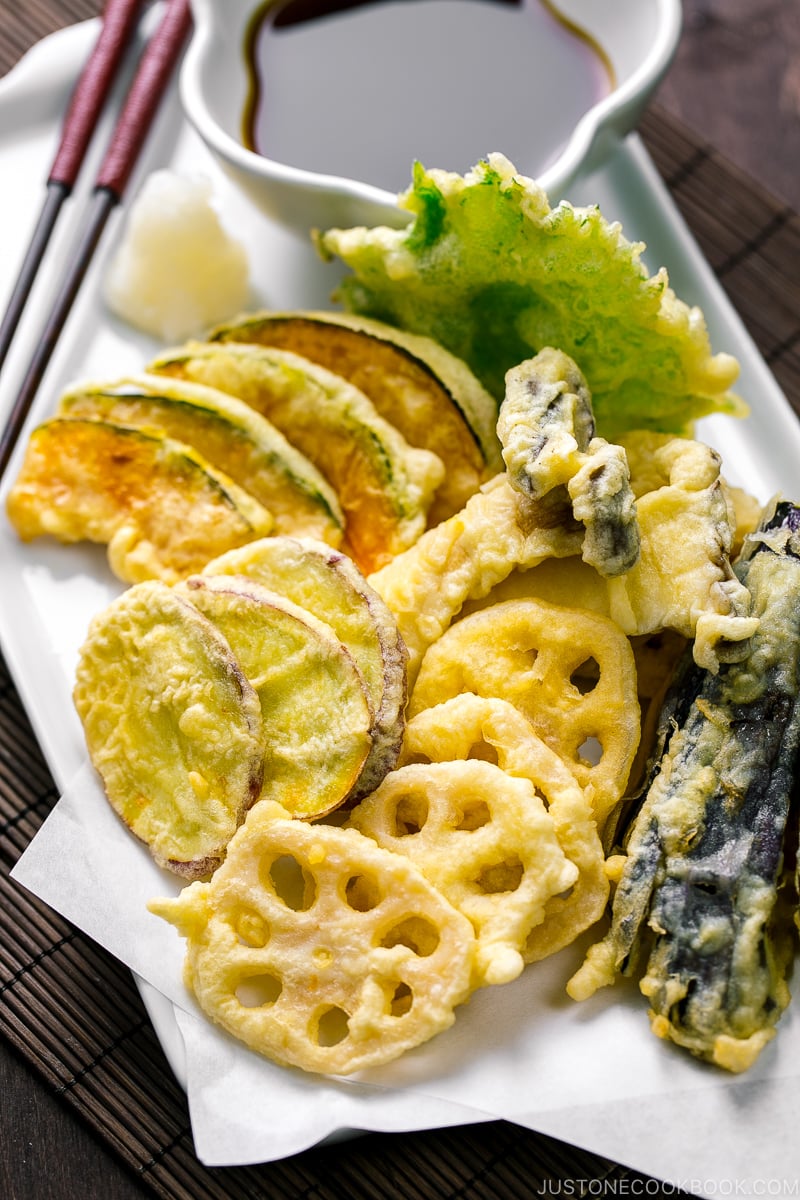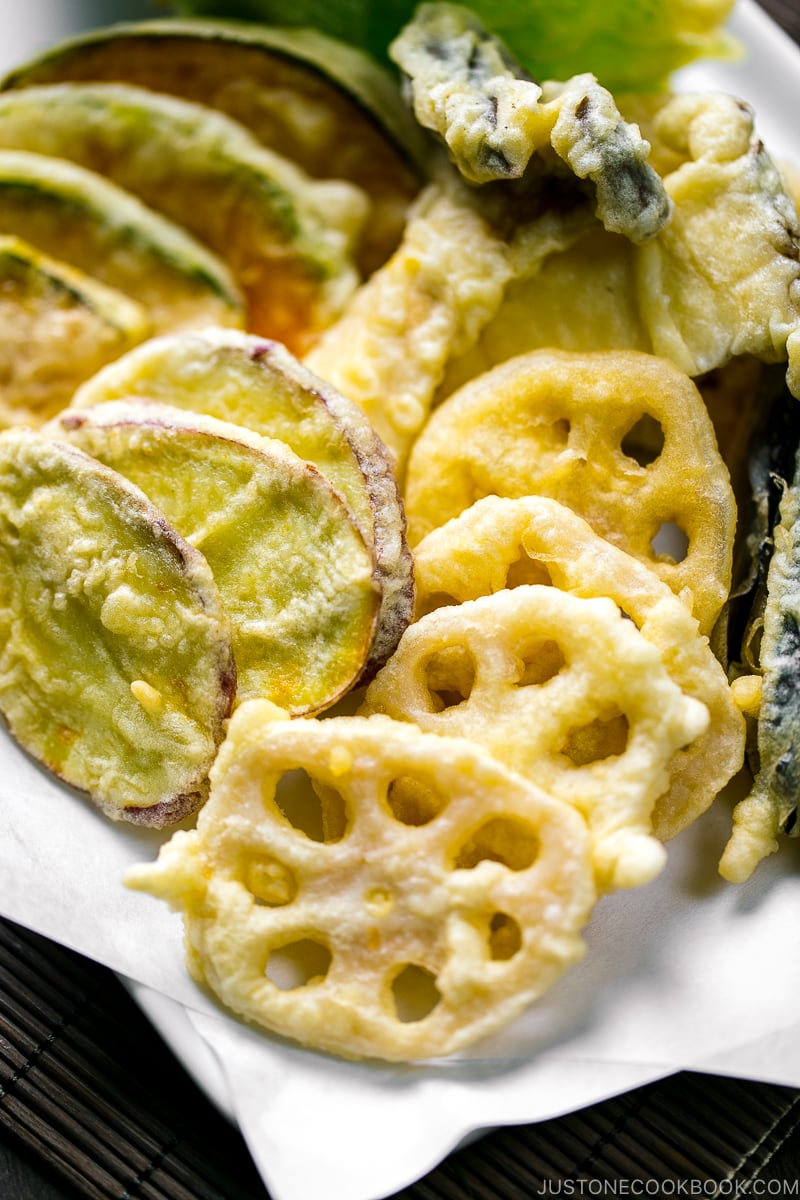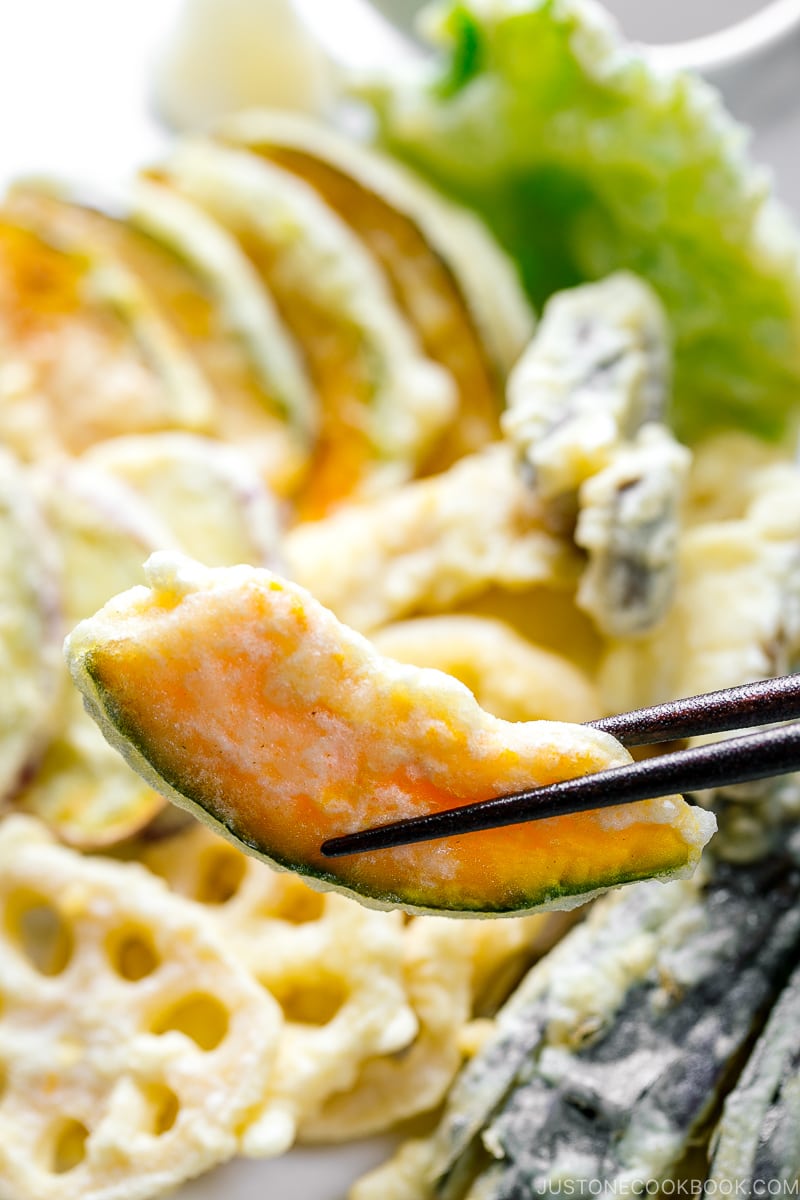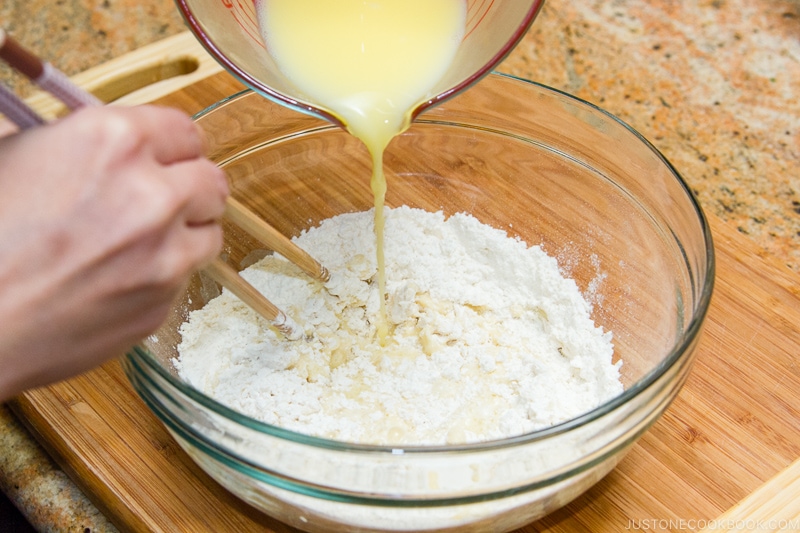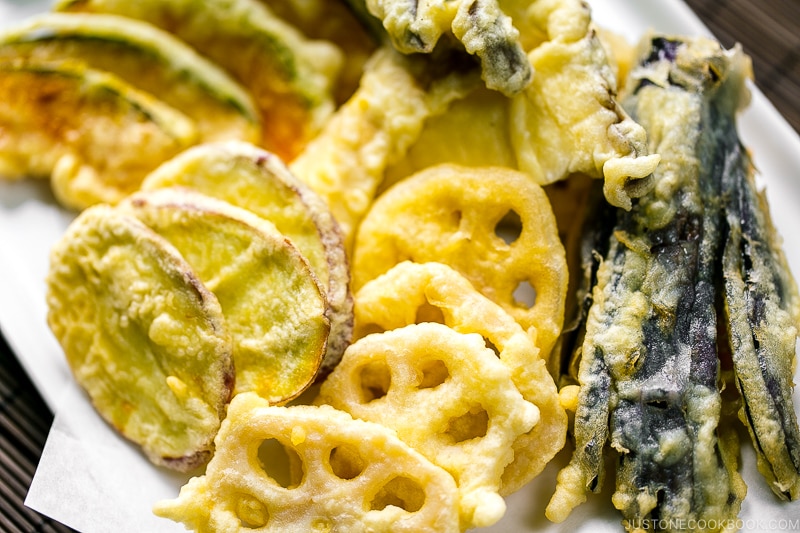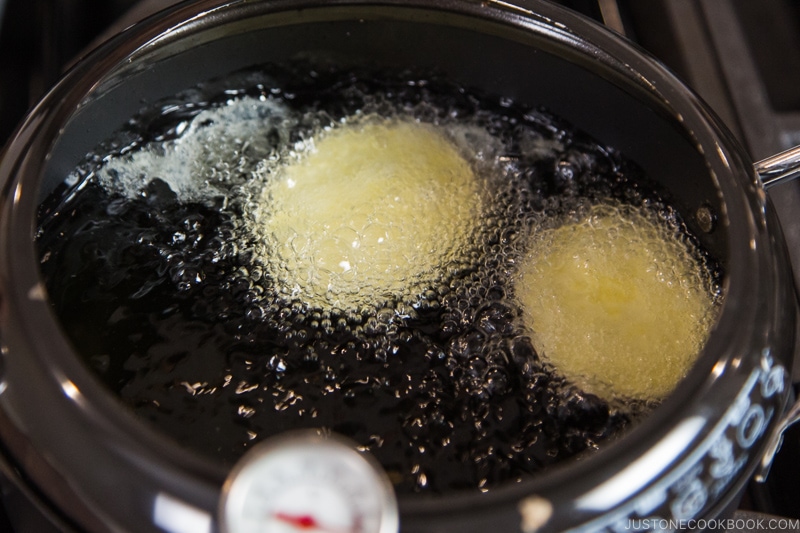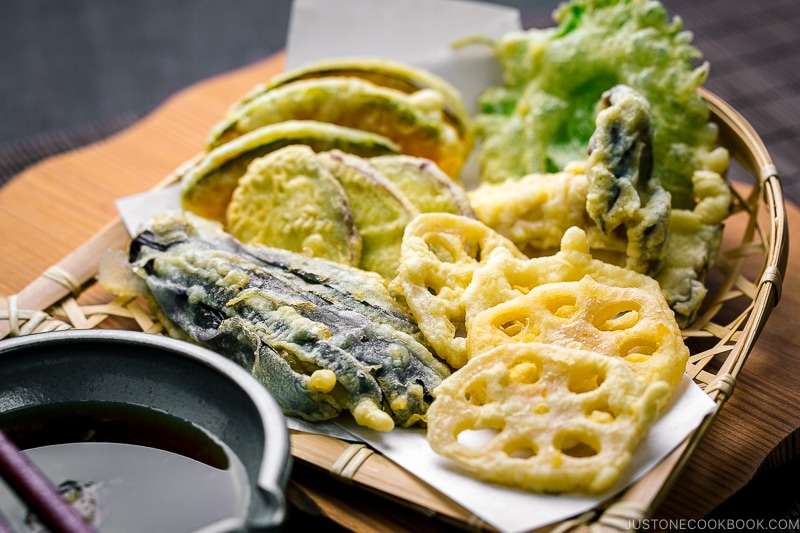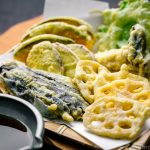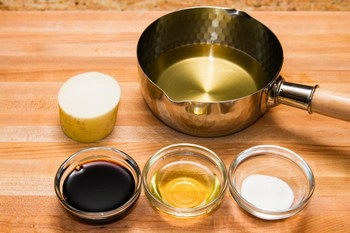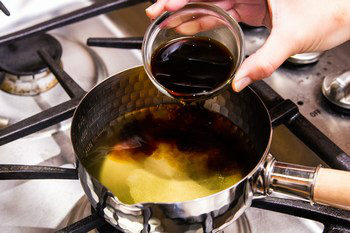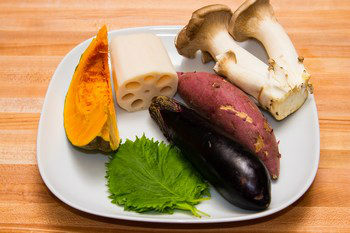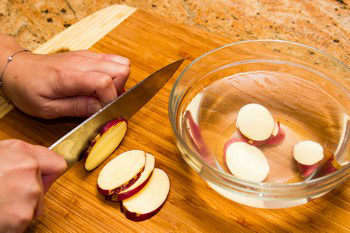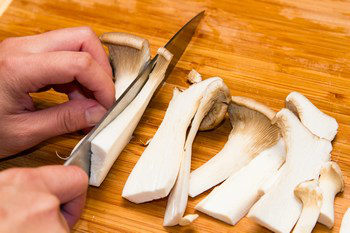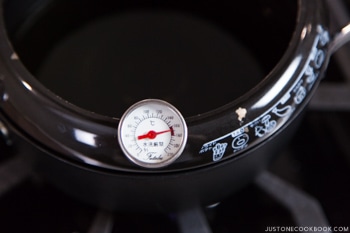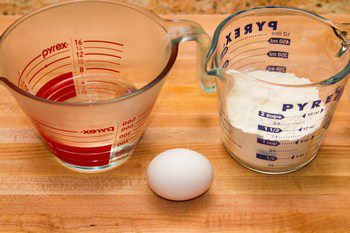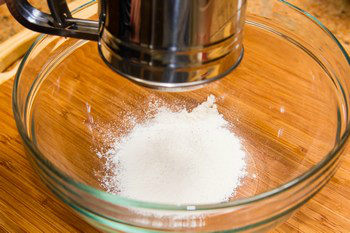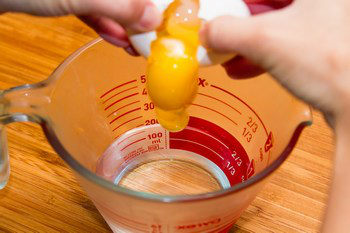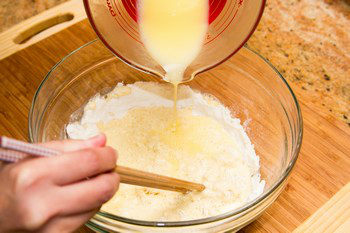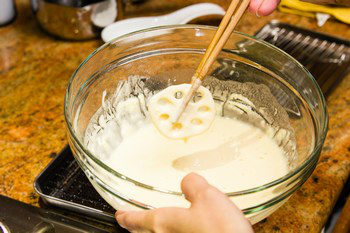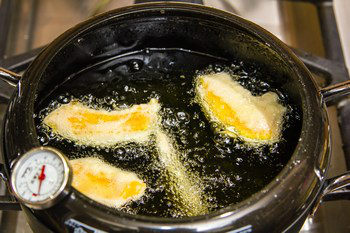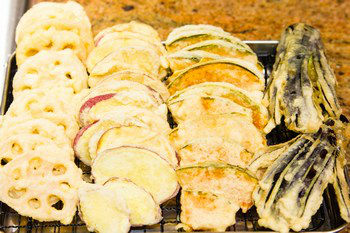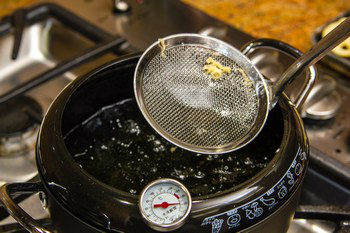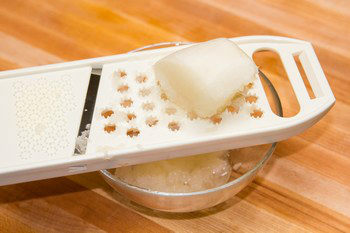Alongside sushi and ramen, tempura is another mandatory menu item for Japanese restaurants. Encased in a crunchy, crispy yet light batter, these perfectly deep-fried seafood, and vegetable are seriously addicting. After sharing my Shrimp Tempura recipe, I am excited to share today’s recipe on Vegetable Tempura (野菜の天ぷら) since many of you have requested it. Dipped in batter and deep-fried, each vegetable gets cooked perfectly on the inside, while the natural sweetness and flavor are enhanced. You would enjoy them piping hot with a delicate dipping sauce with grated daikon. Some of the common vegetables used for Tempura include Japanese sweet potatoes, mushrooms (shiitake or king oysters are delicious), Kabocha squash, bell peppers, lotus roots, and eggplant. When I make vegetable tempura at home, I also like to include shiso leaves as well.
The Key for Perfect Vegetable Tempura
Before I start talking about how to make Tempura, please understand that even for the Japanese, making perfect Tempura is not easy. It requires a lot of skills and practice so don’t be discouraged if your first tempura does not look like ones from restaurants. But how do you get that crispy texture without the food being too oily? The key to perfect tempura is the batter and the temperature of the oil. I created a few steps below to go over the tips for making tempura.
Vegetable Tempura Cooking Tips
How to Make Tempura Batter
Most of Tempura chefs recommend that flour to water ratio should be 1:1. Some recipe requires an egg (or two depending on the amount of flour and water), and some don’t. It’s up to you. When the batter is too thin, the ingredients won’t have much of batter around it and there is no fluffy and crisp texture to it. When the batter is too thick, you feel like you are eating the chewy exterior. Please remember a few tips about the batter. Always mix the batter using chopsticks for only a few seconds to at most 1 minute, leaving lumps in the mixture on purpose. Overmixing the batter will result in the activation of wheat gluten, which causes the flour mixture to become chewy and dough-like when fried. The cold batter is absolutely necessary for the unique fluffy and crisp tempura. All the ingredients (water, egg, and flour) must be cold prior to making the batter, and it has to be made RIGHT BEFORE you deep fry and has to be kept cold at all times to avoid activation of wheat gluten.
What Oil To Use for Tempura
The Tempura specialty restaurant uses untoasted sesame oil (clear) or a special blend of oil that is a combination of many kinds of oil. Each restaurant has its own secret recipe and blends that they perfected over the years. At home, you can simply enhance the flavor by adding sesame oil into the vegetable oil. The temperature has to be between 320-356°F (160°C – 180°C) depending on how long it takes to cook through the ingredients. If it takes a long time to cook, then deep fry at a lower temperature because high temperature will cook the batter too fast and inside won’t be cooked thoroughly. And remember, cold battered ingredients will lower the oil temperature quickly; therefore, if you need to deep fry vegetables at 338°F (170°C), you need to bring the oil to 356-365°F (180-185°C) first.
How to Deep Fry Tempura
If you ask me what’s the most difficult part of making Tempura, I’d say it’s to keep the right temperature at all times while deep frying. It cannot be too high or too low. Most of the time I do not require a thermometer, but if you are not used to deep frying, I highly recommend you get a thermometer to precisely know at what temperature you are deep frying. The right sound of tempura being deep-fried is like a light sound. Like cider just being opened. That kind of light bubbly sound. In order to maintain the correct temperature, do not overcrowd with ingredients when deep frying. As guidance remember just half of the oil surface should be covered with ingredients. When you put too many ingredients in at once, the oil temperature will drop too quickly. What if the oil gets too hot? The quick solution to this is to add a bit of extra oil or add more cold-battered ingredients. As I said, it is all about temperature control when deep frying. Lastly, please pick up crumbs in the oil between batches. The burnt crumb will attach to your new tempura if you don’t pick them up, and oil will get darker once the crumbs become burnt and it leaves a bad flavor in the oil.
Other Tempura Recipes
Shrimp Tempura Gluten Free Tempura
Wish to learn more about Japanese cooking? Sign up for our free newsletter to receive cooking tips & recipe updates! And stay in touch with me on Facebook, Pinterest, YouTube, and Instagram. Editor’s Note: The post was originally published on Jan 20, 2013.
